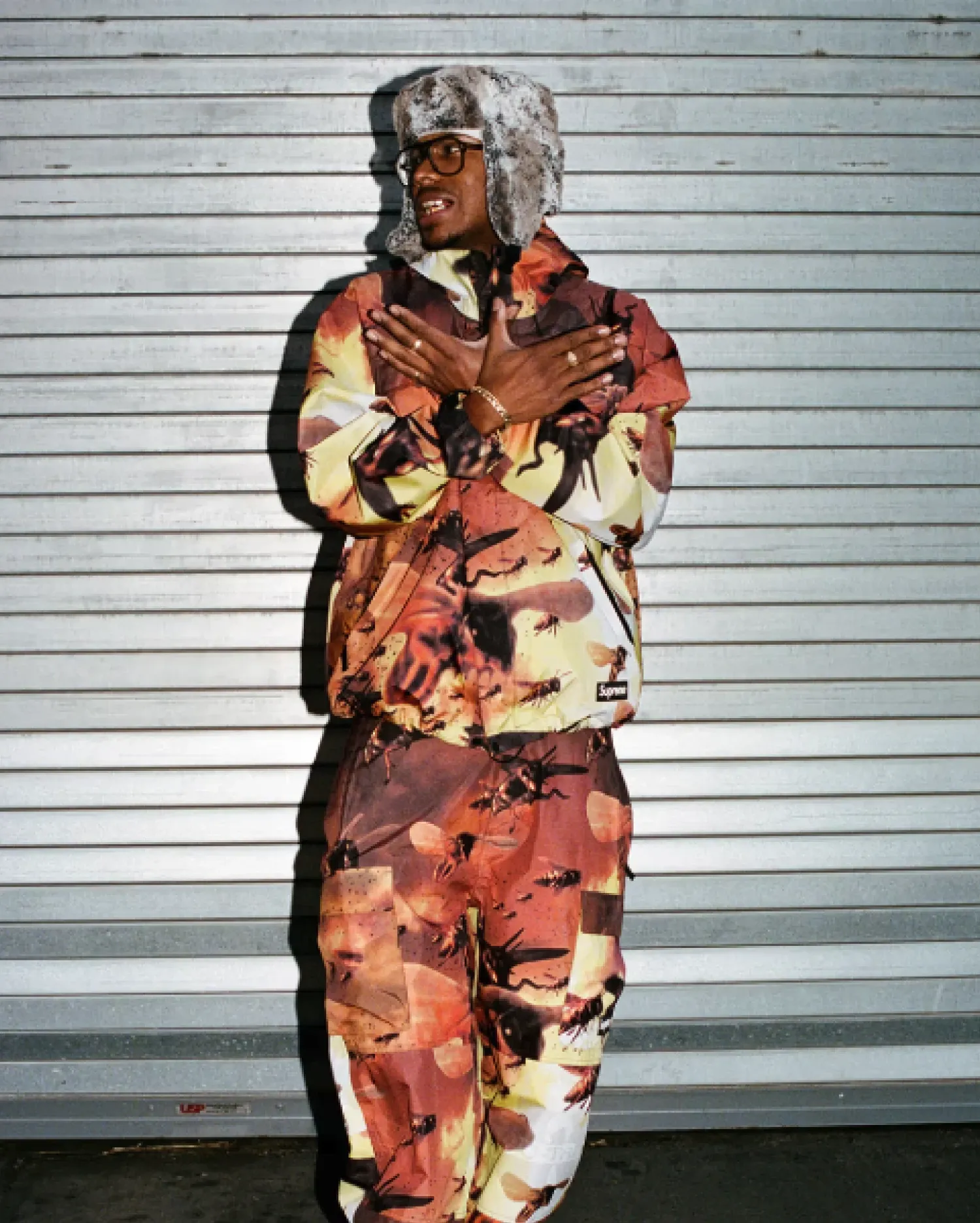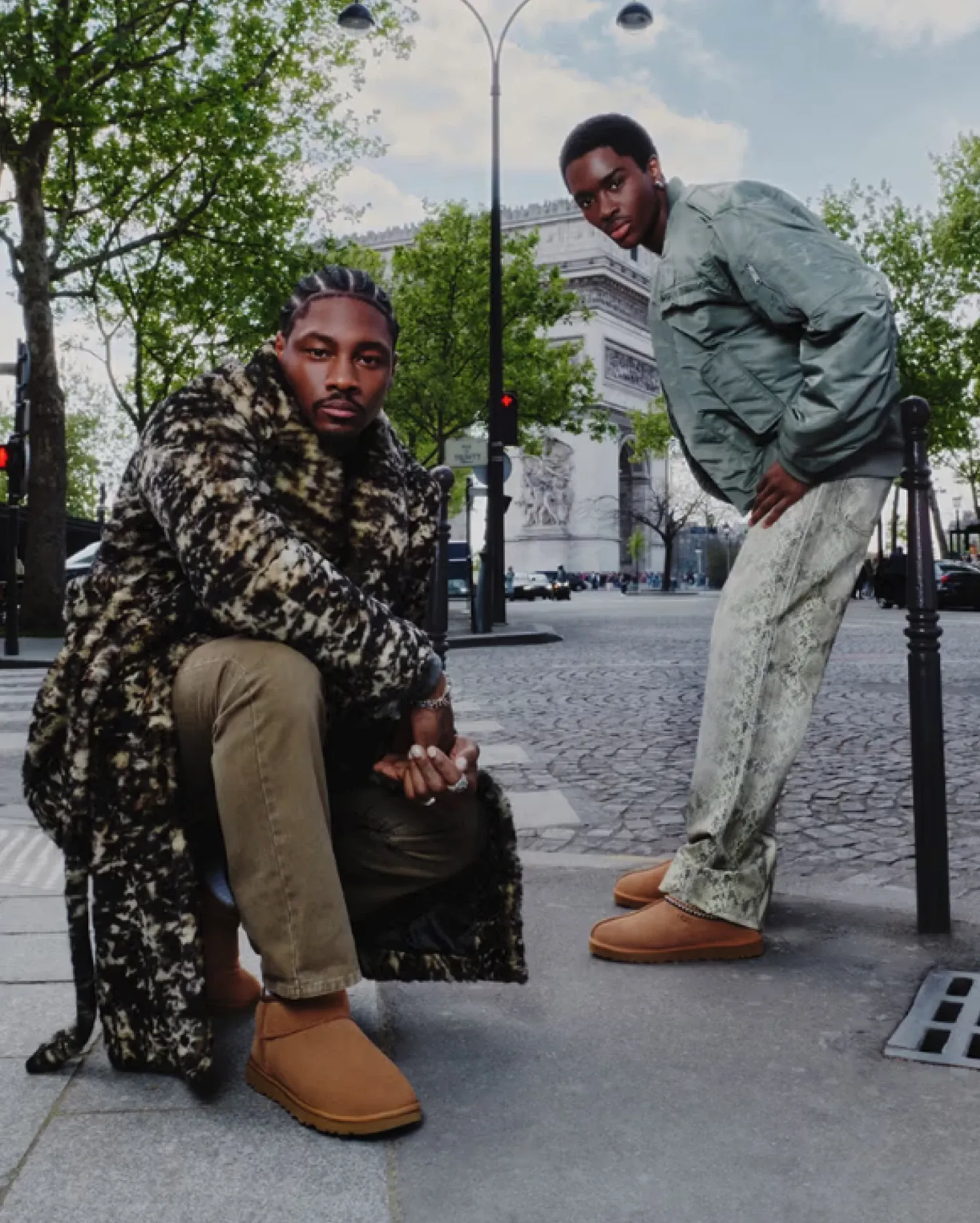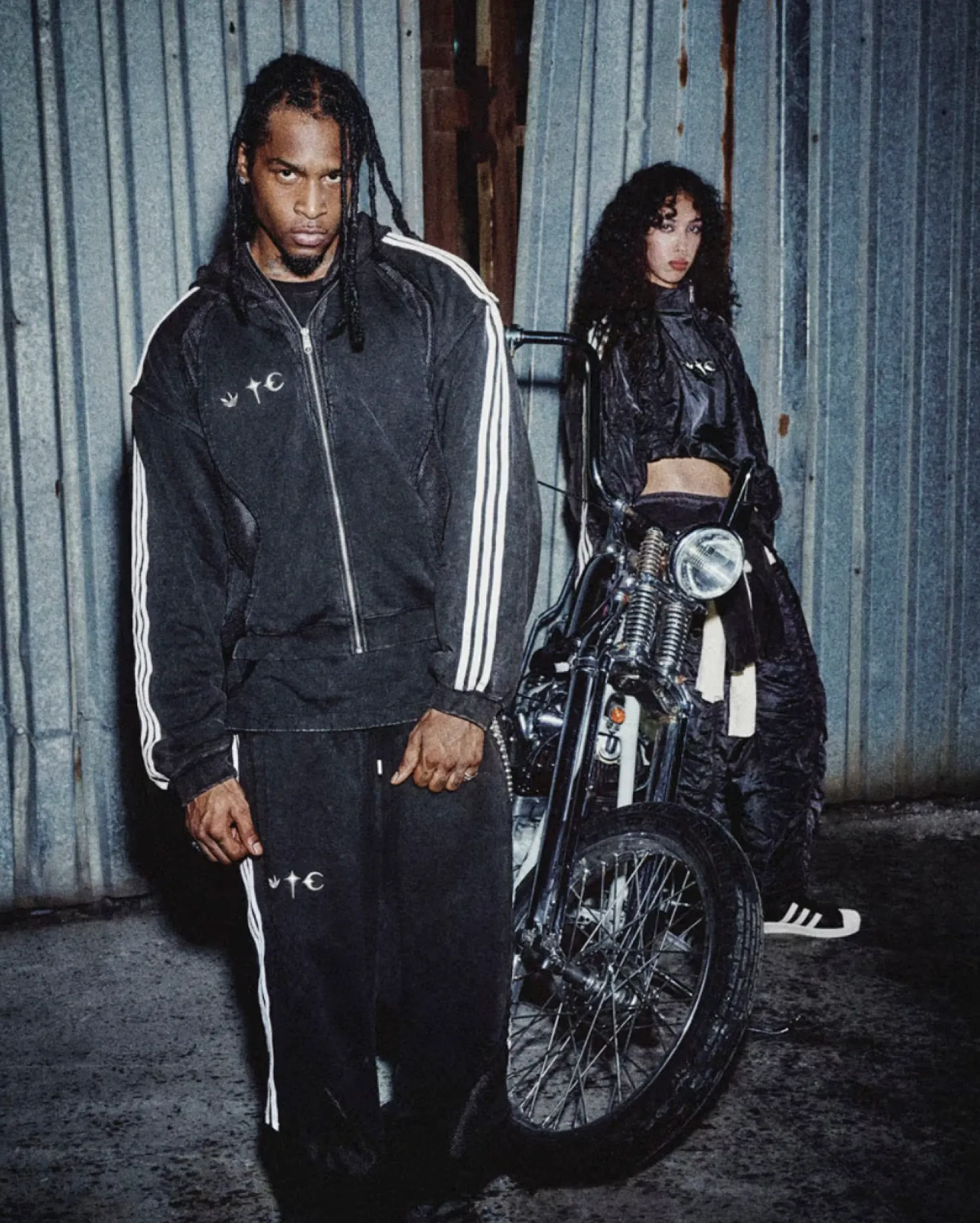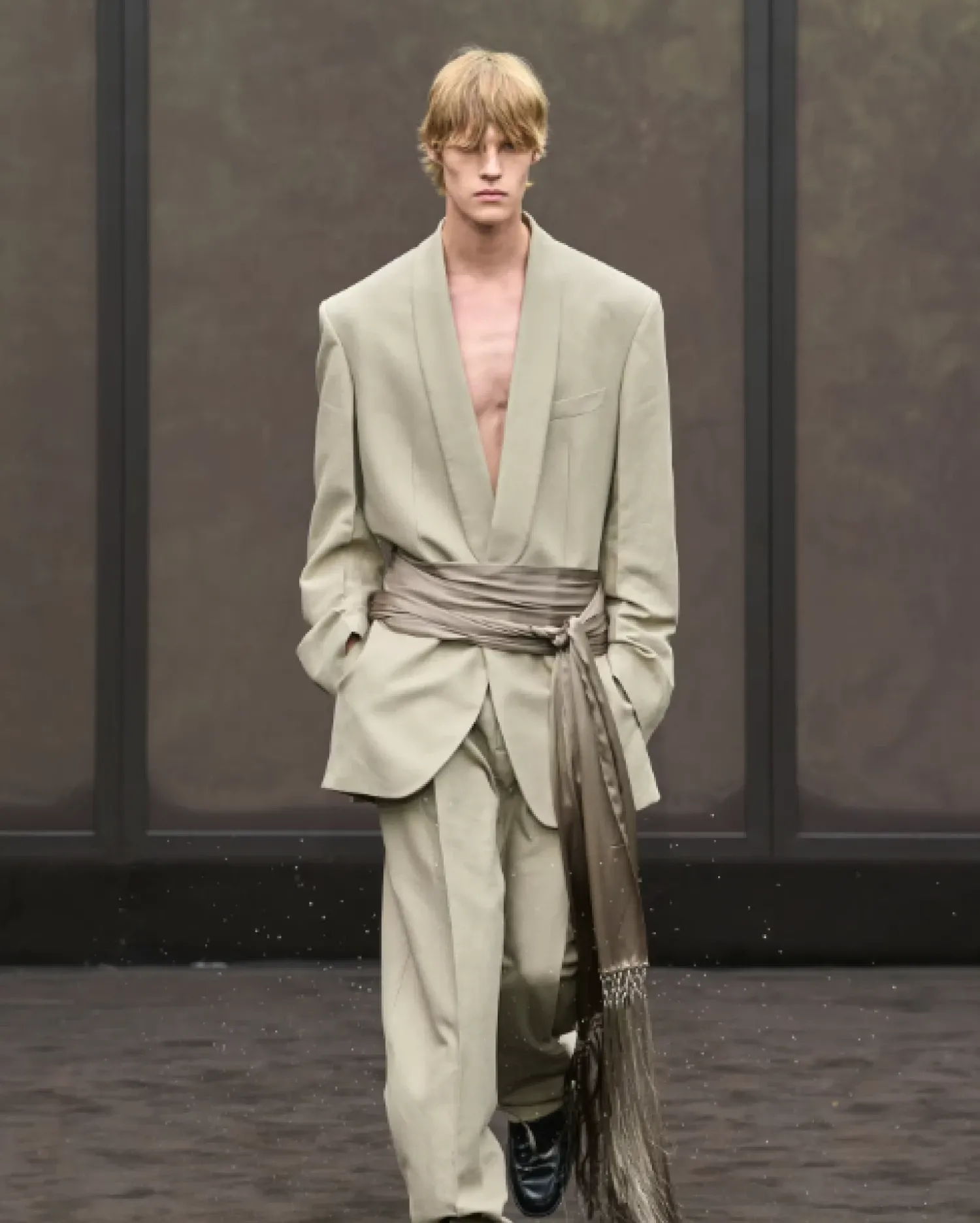
The Evolution of Gucci: From Leather Goods to Sustainable Luxury
In the ever-evolving landscape of luxury fashion, few brands have demonstrated such remarkable transformation as Gucci. From its humble beginnings as a leather goods manufacturer in Florence to its current position as a pioneer in sustainable luxury, Gucci's journey represents a masterclass in adaptation and innovation while maintaining its core identity.

Image credit: Gucci/ @gucciofficial/ Instagram
Shop for GG Marmont
Founding and Early Years: Innovation Born of Necessity
Founded in 1921 by Guccio Gucci, the brand's story began in Florence's historic heart. Inspired by the elegant luggage he encountered while working as a bellhop at London's Savoy Hotel, Guccio established his first shop specializing in fine leather goods. The brand's early focus on exceptional craftsmanship and innovative design laid the foundation for its future success.
During World War II, when material shortages threatened production, Gucci demonstrated remarkable ingenuity. The now-iconic GG canvas was developed as an alternative to leather, featuring the interlocking double-G pattern that would become one of fashion's most recognizable symbols. This adaptation, born of necessity, showcased the brand's ability to turn challenges into opportunities.
Image credit: Gucci/ @gucciofficial/ Instagram
shop for Gucci Baggage
Family Dynamics and Global Expansion
The 1950s and 1960s marked a period of significant expansion under the leadership of Guccio's sons. Aldo Gucci, in particular, was instrumental in transforming the family business into a global luxury powerhouse. The introduction of iconic products like the bamboo handle bag (1947) and the Jackie bag (1961) cemented Gucci's reputation for innovative design.
By the 1970s, Gucci had established itself in major fashion capitals worldwide, attracting a clientele that included Hollywood stars and European royalty. However, this period also saw family disputes that would eventually lead to external ownership and a new chapter in the brand's history.

Image credit: Gucci/ @gucciofficial/ Instagram
shop for Gucci Dionysus
The Sustainability Revolution
Gucci Equilibrium: A New Chapter
In 2018, Gucci launched its Gucci Equilibrium platform, marking a decisive shift toward sustainability. This comprehensive program encompasses:
- Carbon Neutrality: Achieving carbon neutrality across its entire supply chain
- Material Innovation: Developing sustainable alternatives to traditional luxury materials
- Circular Production: Implementing waste reduction and recycling programs
- Social Impact: Supporting community initiatives and promoting diversity
Material Innovation and Environmental Commitment
Gucci's commitment to sustainability is evident in its material choices:
- Metal-Free Tanning: Developing innovative leather processing techniques
- Recycled Materials: Incorporating regenerated nylon and recycled polyester
- Organic Cotton: Transitioning to certified organic cotton sources
- Sustainable Packaging: Implementing FSC-certified packaging solutions
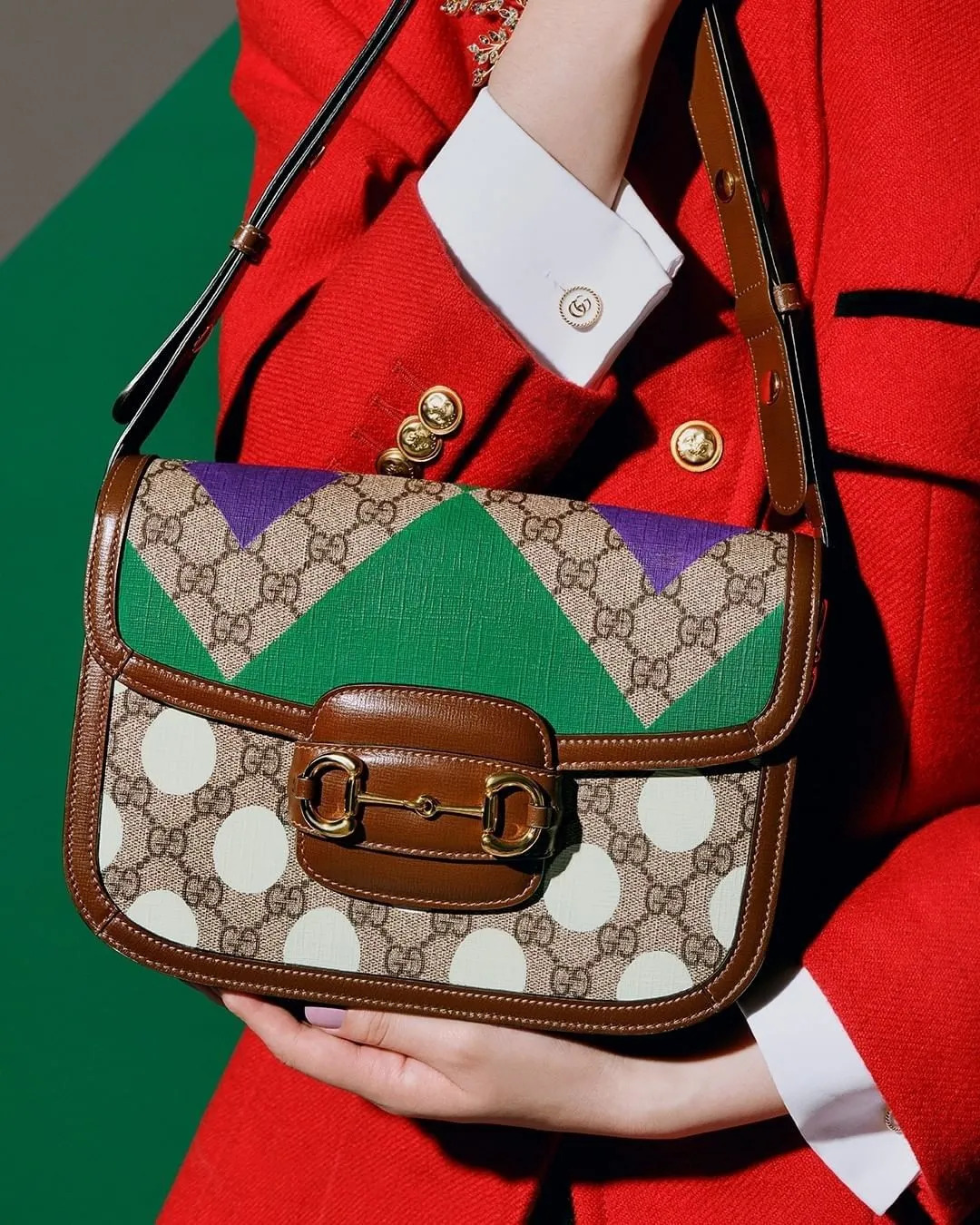
Image credit: Gucci/ @gucciofficial/ Instagram
shop for Gucci Horsebit 1955 bag
Social Impact and Cultural Leadership
Gucci's transformation extends beyond environmental considerations to encompass social responsibility:
- Gucci Changemakers: A global program supporting industry diversity
- Gender Equality: Promoting balanced representation at all organizational levels
- Cultural Preservation: Supporting traditional craftsmanship and artisanal skills
- Educational Initiatives: Partnering with fashion schools and institutions
Challenges and Future Prospects
Despite significant progress, Gucci faces ongoing challenges:
Current Challenges:
- Balancing luxury expectations with sustainable practices
- Maintaining premium quality while using alternative materials
- Meeting growing consumer demand for transparency
- Scaling sustainable practices across global operations
Future Opportunities:
- Innovation in bio-based materials
- Advanced recycling technologies
- Digital authentication solutions
- Expanded circular economy initiatives
Industry Impact and Leadership
Gucci's sustainability initiatives have influenced the broader luxury sector:
- Setting New Standards: Establishing benchmarks for sustainable luxury
- Industry Collaboration: Fostering partnerships for sustainable innovation
- Consumer Education: Raising awareness about sustainable luxury
- Supply Chain Innovation: Developing new models for responsible production

Image credit: Gucci/ @gucciofficial/ Instagram Lee Jeong Jae(Squid Game)
Shop for Gucci Savoy GG Supreme Canvas
Conclusion
Gucci's evolution from a traditional leather goods manufacturer to a leader in sustainable luxury represents more than just corporate transformation—it symbolizes the potential for legacy brands to embrace change while honoring their heritage. The brand's journey demonstrates that luxury and sustainability are not mutually exclusive but rather complementary forces that can drive innovation and create value.
As the fashion industry continues to grapple with sustainability challenges, Gucci's example provides valuable insights into how traditional luxury brands can adapt and thrive in an increasingly conscious market. The brand's commitment to both environmental and social sustainability, while maintaining its position as a leader in luxury fashion, sets a powerful precedent for the industry's future.
This transformation suggests that the future of luxury lies not just in exceptional craftsmanship and design, but in the ability to deliver these qualities while contributing to a more sustainable and equitable world. As Gucci continues to evolve, its influence on the luxury sector and consumer expectations promises to shape the industry for years to come.

